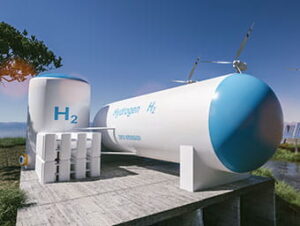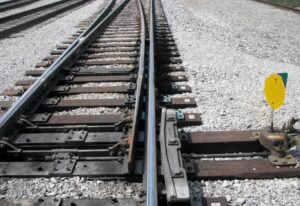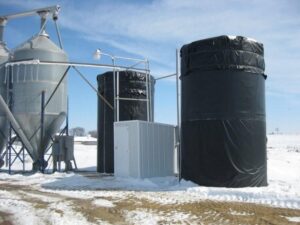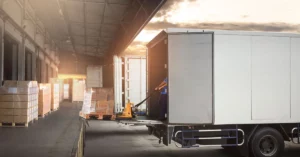Title: Enhancing Rails and Switch Points Efficiency with Heating Cables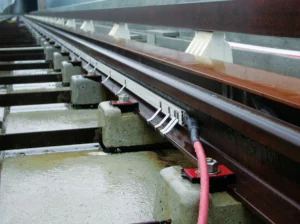
Heating cables are versatile solutions that play a pivotal role in optimizing rails and switch points operations. By efficiently regulating temperature levels, these cables offer numerous benefits, including enhanced safety, improved efficiency, and reduced maintenance costs.
Let’s Begin!
1. Safety Enhancement:
Heating cables ensure safe railway operations by preventing ice and snow accumulation on tracks, reducing the risk of accidents.
Additionally, they aid in the prevention of ice-induced derailments, ensuring passenger and cargo safety.
2. Improved Efficiency:
By maintaining optimal temperatures, heating cables optimize rail and switch point functionality, mitigating potential disruptions caused by adverse weather conditions.
Moreover, they facilitate the smooth operation of trains, minimizing delays and enhancing overall efficiency.
3. Reduced Maintenance Costs:
Heating cables minimize the need for manual snow and ice removal, resulting in substantial cost savings for railway operators.
Additionally, they reduce wear and tear on rail infrastructure, extending its lifespan and reducing maintenance expenses.
Transition: Now let’s delve deeper into the specific applications and advantages of heating cables in rail and switch point heating.
4. Rail Heating:
Heating cables are strategically installed along railway tracks to prevent snow and ice buildup.
These cables effectively melt snow and ice, enabling uninterrupted train movement and improving operational efficiency.
Transition: Furthermore, heating cables offer similar advantages when applied to switch points.
5. Switch Point Heating:
Switch points are critical components of railway infrastructure that allow trains to change tracks.
Heating cables installed near switch points prevent ice formation, ensuring smooth operation and reducing the risk of derailments.
Transition: Next, let’s explore some additional benefits of using heating cables in rail and switch point heating.
6. Energy Efficiency:
Modern heating cable systems incorporate advanced technologies that optimize energy consumption.
Intelligent temperature sensors and control systems ensure that heating is activated only when necessary, minimizing energy waste.
7. Rapid Installation and Adaptability:
Heating cables are designed for easy installation and adaptability to various rail and switch point configurations.
This flexibility allows for efficient implementation on both new projects and retrofits of existing infrastructure.
Transition: Now, let’s briefly discuss the economic and environmental advantages of heating cables.
8. Economic Advantages:
Integrating heating cables into rail and switch point heating systems reduces operational costs associated with manual snow removal and maintenance.
Furthermore, improved efficiency leads to reduced delays, enhancing the overall profitability of railway operations.
9. Environmental Benefits:
Heating cables contribute to sustainable railway practices by reducing the need for chemical de-icing agents.
By eliminating the use of harmful substances, heating cables help preserve the environment and protect surrounding ecosystems.
10. Remote Monitoring and Control:
Many heating cable systems offer remote monitoring and control capabilities. This allows railway operators to monitor temperature levels and activate or adjust the heating system as needed, even from a centralized control room. Remote control functionality enhances operational efficiency and simplifies maintenance procedures.
11. Preventing Ice Jams:
Heating cables are effective in preventing ice jams, particularly in areas prone to freezing rain or sudden temperature fluctuations. Ice jams occur when ice accumulates around rail joints or switch points, hindering proper movement. By keeping these critical areas ice-free, heating cables ensure the smooth functioning of railway operations.
12. Reducing Maintenance Downtime:
Traditional methods of snow and ice removal often require temporary service disruptions or reduced train speeds. Heating cables minimize the need for such maintenance downtime, as they continuously prevent ice and snow buildup. This results in uninterrupted train schedules and improved passenger satisfaction.
13. Enhancing Passenger Safety:
Heating cables play a significant role in ensuring passenger safety. By preventing ice formation on platforms and stairs, these cables reduce the risk of slips and falls. Additionally, they contribute to maintaining clear visibility for train operators, enabling them to respond quickly to potential hazards.
14. Optimal Heat Distribution:
Heating cables are designed to provide uniform heat distribution along the rail tracks and switch points. This ensures that all critical areas are adequately heated, preventing localized ice formation and maintaining consistent operational conditions throughout the railway network.
15. Integration with Intelligent Systems:
Heating cables can be integrated with intelligent systems, such as weather monitoring stations and predictive analytics software. By analyzing weather patterns and temperature forecasts, these systems can automatically activate the heating cables in anticipation of adverse conditions, further enhancing operational efficiency.
16. Compatibility with Different Rail Types:
Heating cables are compatible with various types of rail systems, including standard gauge, narrow gauge, and high-speed rail. This adaptability allows for widespread implementation of heating cable solutions across different railway networks, ensuring consistent performance regardless of the rail type.
17. Long-Term Cost Savings:
While the initial investment in heating cables may seem significant, the long-term cost savings outweigh the upfront costs. By reducing the need for manual snow removal, minimizing maintenance downtime, and extending the lifespan of rail infrastructure, heating cables contribute to substantial cost savings over their operational lifetime.
18. Compliance with Safety Standards:
Heating cables designed for rails and switch points heating adhere to strict safety standards and regulations. They are engineered to withstand harsh environmental conditions, ensuring reliable operation even in extreme temperatures and challenging weather conditions.
19. Environmental Considerations:
Using heating cables in rail and switch point heating promotes environmental sustainability. By reducing the reliance on chemical de-icing agents, these cables minimize the release of harmful substances into the environment. Additionally, their energy-efficient operation helps reduce carbon emissions associated with traditional snow removal methods.
20. Continuous Technological Advancements:
The field of rails and switch points heating is continuously evolving, with ongoing technological advancements in heating cable systems. These advancements focus on improving energy efficiency, enhancing durability, and integrating smart features for seamless monitoring and control.
Conclusion:
Heating cables provide indispensable solutions for efficient rails and switch points heating. With their ability to enhance safety, improve efficiency, and reduce maintenance costs, these cables are crucial for ensuring smooth and reliable railway operations. By embracing this technology, railway operators can significantly enhance their performance while prioritizing safety and sustainability.


